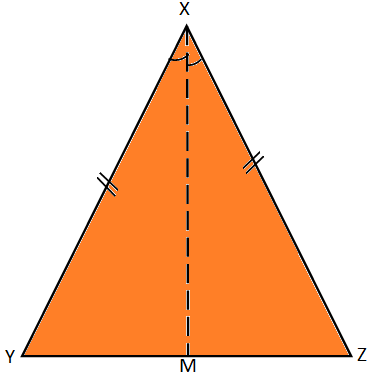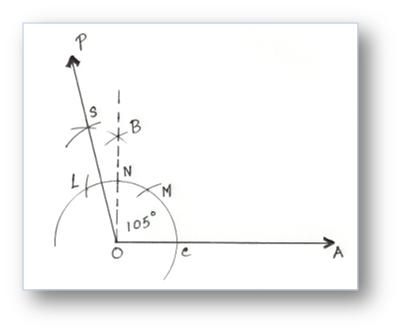Ask questions which are clear, concise and easy to understand.
Ask QuestionPosted by Nisha Murali 3 years, 9 months ago
- 3 answers
Posted by Nisha Murali 3 years, 9 months ago
- 3 answers
Posted by Nandini 18 3 years, 9 months ago
- 2 answers
Yogita Ingle 3 years, 9 months ago
Since we want five numbers, we write 3/5 and 4/5 So multiply in numerator and denominator by 5+1 =6 we get

Posted by Barsha Rani Sahu 3 years, 9 months ago
- 2 answers
Nandini 18 3 years, 9 months ago
Darshan Sharma 3 years, 9 months ago
Posted by Prachi Sethi 3 years, 9 months ago
- 2 answers
Prachi Sethi 3 years, 9 months ago
Gaurav Seth 3 years, 9 months ago
Don't post personal information, mobile numbers and other details.
Don't use this platform for chatting, social networking and making friends. This platform is meant only for asking subject specific and study related questions.
Be nice and polite and avoid rude and abusive language. Avoid inappropriate language and attention, vulgar terms and anything sexually suggestive. Avoid harassment and bullying.
Ask specific question which are clear and concise.
If content is found in violation, the user posting this content will be banned for 30 days from using Homework help section. Suspended users will receive error while adding question or answer. Question comments will be disabled. Read community guidelines at https://mycbseguide.com/community-guidelines.html
Posted by Arun Kushwah 3 years, 9 months ago
- 2 answers
Nandini 18 3 years, 9 months ago
Yogita Ingle 3 years, 9 months ago
Let's assume side of equilateral triangle is 5 cm.
Steps of construction :
1) Draw a line segment AB of length 5 cm.
2) Taking 5 cm as radius, and A as centre, draw an arc.
3) Taking 5 cm as radius, and B as centre, draw another arc.
4) Let C be the point where the two arcs intersect . Join AC and BC and label the sides.
Thus, △ ABC is the required equilateral triangle.
Justification :
By construction, AB = AC = BC (Radius of equal arcs)
Since, all sides are equal , therefore, △ ABC is an equilateral triangle

Note: Take 5 cm in Image
Posted by Sanjana Venkatesh 3 years, 9 months ago
- 2 answers
Nandini 18 3 years, 9 months ago
Yogita Ingle 3 years, 9 months ago
Given a number 0.2353535…….
We need to prove 0.2353535… = 0.235‾ can be expressed in the form of p/q, where p and q are integers and q ≠zero
Proof:
Let us assume that
x = 0.2353535…
x = 0.235 ——————(i)
On Multiplying both sides by 100 of equation (i) we get,
100x = 100 × 0.2353535…
100x = 23.53535————–(ii)
Subtracting equation (i) from equation (ii) we get,
100x – x = 23.53535 – 0.2353535…
99x = 23.2999965
x = 23.2999965/99
x = 233/990
x = 0.2353535
Hence, x = 0.2353535…= 0.235‾ can be expressed in the form of p/q as 233/ 990 and here q=990 (q≠zero)
Hence proved.
Posted by Hitesh Chandora 3 years, 9 months ago
- 2 answers
Nandini 18 3 years, 9 months ago
Yogita Ingle 3 years, 9 months ago
In triangle PQC and triangle PRC,
Given - QC= PR
PQ=CR
To prove:- angle PCQ= angle CPR
Proof:- In triangle PQCand triangle PRC:-
QC=PR [GIVEN]
PQ=CR [GIVEN]
andPC=PC [COMMON]
by SAS similarly criterion, triangle PQC is congruent to triangle PRC.
therefore by C.P.C.T
angle PCQ =angle CPR
Posted by Gaurav Kumar 3 years, 9 months ago
- 2 answers
Yogita Ingle 3 years, 9 months ago
Non Euclidean Geometry:
All the attempts to prove Euclid’s fifth postulate using the first 4 postulates failed. But they led to the discovery of several other geometries, called non-Euclidean geometries. Now the geometry of the universe we live in has been shown to be a non-Euclidean geometry. In fact, it is called spherical geometry. In spherical geometry, lines are not straight. They are parts of great circles (i.e., circles obtained by the intersection of a sphere and planes passing through the centre of the sphere). As per fist postulate of Euclid, lines AN & BN should not meet, but in the image below, these lines meet at point N. It has been proved that Euclidean geometry is valid only for the figures in the plane. On the curved surfaces, it fails.
Posted by Arun Kushwah 3 years, 9 months ago
- 1 answers
Gaurav Kumar 3 years, 9 months ago
Posted by Arun Kushwah 3 years, 9 months ago
- 1 answers
Yogita Ingle 3 years, 9 months ago
Given: In the isosceles ∆XYZ, XY = XZ.

To prove ∠XYZ = ∠XZY.
Construction: Draw a line XM such that it bisects ∠YXZ and meets the side YZ at M.
Proof:
|
Statement 1. In ∆XYM and ∆XZM, (i) XY = XZ (ii) XM = XM (iii) ∠YXM = ∠ZXM
2. ∆XYM ≅ ∆XZM 3. ∠XYZ = ∠XZY. (Proved) |
Reason 1. (i) Given. (ii) Common side. (iii) XM bisects ∠YXZ.
2. By SAS criterion. 3. CPCTC. |
Posted by Arun Kushwah 3 years, 9 months ago
- 2 answers
Yogita Ingle 3 years, 9 months ago
In ΔABE and ΔACF,
∠BAE=∠CAF (Common angle)
∠AEB=∠AFC ....(∵BE⊥AC and CF⊥AB)
BE=CF (Given that altitudes are equal)
By AAS criterion of congruence,
ΔABE≅ΔACF
Hence,
AB=AC (by CPCT)
Posted by Arun Kushwah 3 years, 9 months ago
- 1 answers
Yogita Ingle 3 years, 9 months ago
<i>Step of Construction:</i>
(i) After making 90° angle take L and N as centre and draw two arcs cutting each other at S.
(ii) Join SO.
Then, ∠SOA = 105°.

Posted by Arun Kushwah 3 years, 9 months ago
- 1 answers
Yogita Ingle 3 years, 9 months ago
since , AB is a line segment,
L is drawn perpendicular to AB,
A point 'p' lies on line L.
( as shown in the diagram in the attachment )
To prove : P is equidistant from A and B.
Prove :- In ∆AOP and ∆BOP ,
OP = OP ( common side )
POA =
POB
AO = OB
∆AOP
∆BOP (By S.A.S.)
=> AP = BP ( By C.P.C.T. )
Hence , "P" is equidistant from A and B .
Posted by Arun Kushwah 3 years, 9 months ago
- 2 answers
Yogita Ingle 3 years, 9 months ago
In △AOB and △DOC
∠BAO=∠CDO (alternate angles as AB∥CD and BC is the transversal)
∠AOB=∠DOC(vertically opposite angles)
OA=OD(given)
∴△AOB≅△DOC by ASA rule.
Meenkashi Singh 3 years, 9 months ago
Posted by Arun Kushwah 3 years, 9 months ago
- 2 answers
Yogita Ingle 3 years, 9 months ago
In triangle PQC and triangle PRC,
Given - QC= PR
PQ=CR
To prove:- angle PCQ= angle CPR
Proof:- In triangle PQCand triangle PRC:-
QC=PR [GIVEN]
PQ=CR [GIVEN]
andPC=PC [COMMON]
by SAS similarly criterion, triangle PQC is congruent to triangle PRC.
therefore by C.P.C.T
angle PCQ =angle CPR
Meenkashi Singh 3 years, 9 months ago
Posted by Arun Kushwah 3 years, 9 months ago
- 1 answers
Yogita Ingle 3 years, 9 months ago
It is given that ∠BAD=∠EAC
∠BAD+∠DAC=∠EAC+∠DAC [add ∠DAC on both sides]
∴∠BAC=∠DAE
In △BAC and △DAE
AB=AD (Given)
∠BAC=∠DAE (Proved above)
AC=AE (Given)
∴△BAC≅△DAE (By SAS congruence rule)
∴BC=DE (By CPCT)
Posted by Vandana Kapoor 3 years, 9 months ago
- 0 answers
Posted by Riya Kumari 3 years, 9 months ago
- 1 answers
Yogita Ingle 3 years, 9 months ago
Given that:- ABCD is a parallelogram and EFCD is a rectangle.
To prove:- ar(ABCD)=DC×AL
Proof:-
∴AB∥CD.....(1)[∵Opposite sides of parallelogram are equal]
As given that EFCD is a rectangle and we know that rectangle is also a parallelogram.
∴EF∥CD.....(2)
From eqn(1)&(2), we hahve
AB∥EF
Now, ABCD and EFCD are two parallelograms with same base CD and between tha same parallels EB and CD.
As we know that parallelogram with same base and in between same parallels are equal in area.
∴ar(ABCD)=ar(EFCD)
As from the fig.
ar(EFCD)=DC×FC
⇒ar(ABCD)=DC×FC.....(3)
AL⊥CD[Given]
∴AFCL is a also a rectangle.
∴AL=FC.....(4)
From eqn(3)&(4), we get
ar(ABCD)=DC×AL
Hence proved that ar(ABCD)=DC×AL.

Posted by Nisha Murali 3 years, 9 months ago
- 3 answers
Abhay Singh 3 years, 9 months ago
Yogita Ingle 3 years, 9 months ago
Let us rewrite (102)3 as (100+2)3
Now using the identity (a+b)3=a3+b3+3ab(a+b), we get
(100+2)3=1003+23+[(3×100×2)(100+2)]
=1000000+8+(600×102)
=1000000+8+61200
=1061208
Hence, (102)3=1061208
Posted by Arun Kushwah 3 years, 9 months ago
- 2 answers
Yogita Ingle 3 years, 9 months ago
Given: In ΔPQR,
∠R >∠Q
⇒ PQ > PR (side opposite to greater angle is greater)
Hence, B is correct.
Posted by Arun Kushwah 3 years, 9 months ago
- 3 answers
Yogita Ingle 3 years, 9 months ago
Which of the following can be construed using ruler and pair of compasses only (A). 35° (B). 40° (C). 37.5° (D). 47.5°
Ans c
Posted by Arun Kushwah 3 years, 9 months ago
- 2 answers
Yogita Ingle 3 years, 9 months ago
Given E and F are mid point of equal sides AB and AC of triangle ABC
In ΔABF and ΔACE
AB=AC (given )
∠A=∠A (common angle )
AF=AE (halves of equal sides)
∴ΔABF≅ΔACE (SAS rule)
∴BF=CF (CPCT)

Posted by Aryan Maran 3 years, 9 months ago
- 2 answers
Chandana M Patil 3 years, 9 months ago
Posted by Pakhi Saxena 3 years, 9 months ago
- 1 answers
Posted by Vandana Bari 3 years, 9 months ago
- 5 answers
Posted by Ishika Sharma 3 years, 9 months ago
- 5 answers
Posted by Ishika Sharma 3 years, 9 months ago
- 1 answers

myCBSEguide
Trusted by 1 Crore+ Students

Test Generator
Create papers online. It's FREE.

CUET Mock Tests
75,000+ questions to practice only on myCBSEguide app
 myCBSEguide
myCBSEguide


Nisha Murali 3 years, 9 months ago
3Thank You